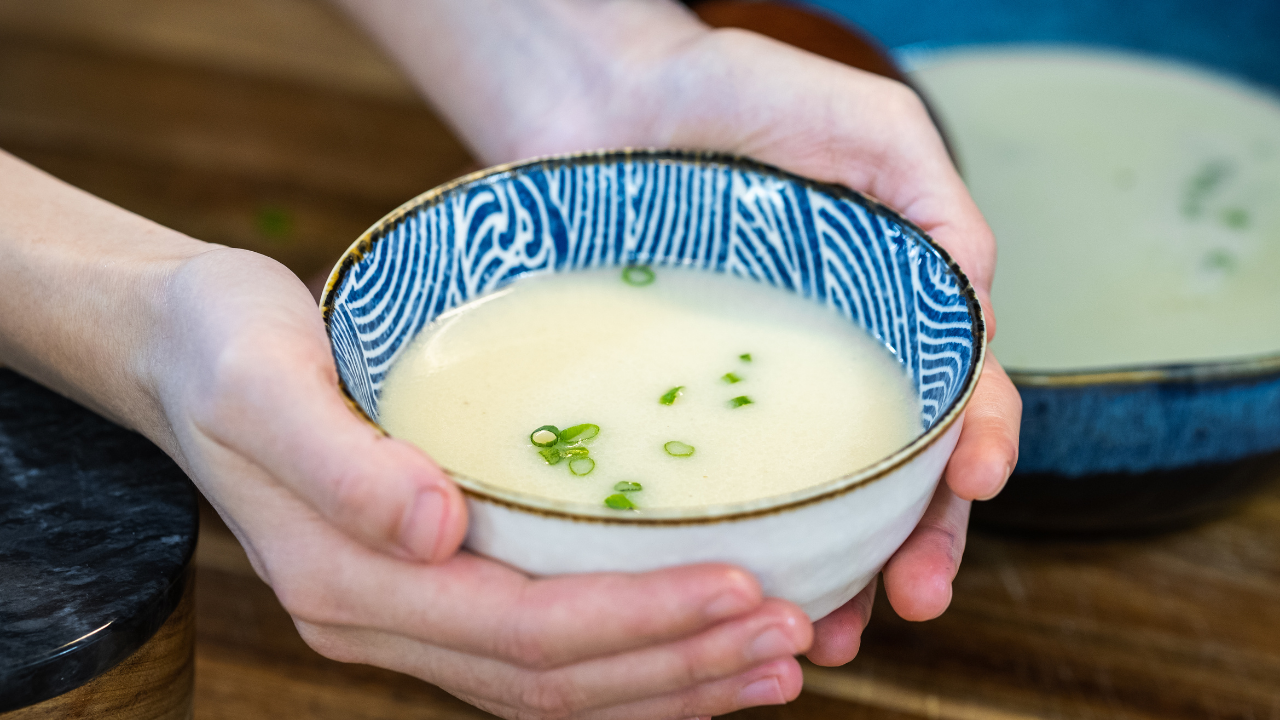Today, we are making Milky White Fish Soup, or what we call Naibai Yutang (奶白鱼汤). It got its name from the white look, the milky taste, and the creamy consistency. But there are no dairy products added to this soup. The recipe is extremely simple, and there is only one secret you need to know in order to turn the fish bones and water into this fabulous broth.

In China, most people will use smaller affordable whole fish to make this recipe, but I am using fish bones today because whole fish in the USA is quite pricey and the size is pretty big. So I used the meat for a different dish and save the bones for today’s recipe. Plus, I find fish bones are even better. Not only is it super cheap, but it also contains a lot more gelatin which is the key element to create the white creamy broth.
Chop the bones into 1.5-inch-wide pieces. Any type of white fish that has a mild taste will work beautifully. This recipe uses minimal seasonings to highlight the natural flavors of the fish. So, the freshness matters, do not use frozen sources. Set the fish bones aside.
Cut 6-8 scallions into 1.5-inch-long pieces. Slice 2-3 inches of ginger thinly.

We’re going to use 2/3 of the scallion and 2/3 of the ginger to rub the fish. Reserve the rest for later use. Continue by adding 3 tbsp of Chinese cooking wine into the bowl then add 4 tbsp of cornstarch. Go in with your hand and rub everything for 3-5 minutes. This will help to remove any unpleasant smells. Be sure to wear gloves, otherwise, you might get hurt by the sharp bones.

Remove all the aromatics and rinse the starch off with running water. Drian it completely. Then dry the bones with paper towels so the oil doesn’t splatter everywhere when we pan fry it. Also, if your fish is wet, it will stick to the wok. Set it aside.

Turn the heat to high and heat the wok until smoking hot. Add a drizzle of cooking oil and swirl it around to cover the whole bottom. Throw in the fish bones. Spread them out so most of the pieces are touching the bottom of the wok. We want to brown the bones. The Maillard reaction will create lots of flavor for the soup.

Once the fish is nice and golden, toss in the reserved scallions and ginger. If you’re making this for someone having a cold, you can go ahead and double the ginger amount because it is really good to help to ease the symptoms. Next, is the key step. Pour in 4 cups of boiling hot water and keep the heat on high the whole time. This is the secret! When boiling water touches the hot wok, it will bubble intensely which shakes the fish bones and accelerates the gelatin dissolution. The strong activity breaks down the fat into micro drops which will stabilize by the gelatin that is released from the fish bones. This process is called emulsion. It will give the soup a significant creamy texture and white color.

Another great thing about this soup is that you don’t need hours of simmering. Put on the lid and keep the heat at medium (Put on the lid and keep the heat at high) for 6-8 more minutes and that’s it. You are done. Look at that. So beautiful. we often add vegetables, noodles, tofu or other meat proteins to this broth and make it versatile. I will share those recipes in the future; let’s keep this one simple today.

Use a sieve to get rid of the solid bits. It smells so good. We just need a little salt to make this mind-blowing. Optionally, add some freshly ground white pepper. Sprinkle some diced scallion as a garnish.

This is delicious. I can eat it all – so comfortable. Fish broth is not as fishy as you think. The taste is quite subtle, naturally sweet, and rich in umami. Whenever I get sick, my mom will bring this to my bed and she likes to mention that my grandmom makes it for her too. So, this is definitely something in my family that is being passed on from generation to generation. I hope you give it a try soon!




































































